Parowan: The “Mother Town” of Resourceful Southern Utah Pioneers
Contributed By Rachel Sterzer, Church News contributor
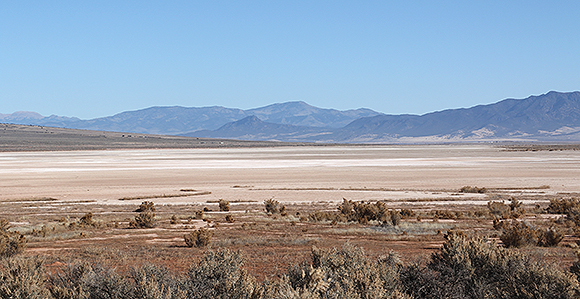
The now-depleted Little Salt Lake found in the Parowan Valley was originally named for its resemblance to its counterpart in the north.
Article Highlights
- Parowan was founded by Parley P. Pratt and cultivated by industrious southern Utah pioneers.
PAROWAN, UTAH
One of the things Steve Decker loves about his hometown is that no matter where people go in the world, they are always proud to claim it as “home.”
Decker and his sister, Sandra Decker Benson, longtime residents and local historians, were born and raised in the small southern Utah town by parents who were also born and raised here. They, in turn, have raised their own families here.
“It’s a great place to raise children,” Benson said.
Today, Parowan—with a population of about 3,000—is a mix of old and new, with many lovely historic buildings, a tree-lined Main Street, an original town square, and a scenic location nestled in a valley at the mouth of a canyon. Valentine Peak, a red-tipped mountain, is a common landmark for the city.
Parowan is often referred to as a “gateway” to nearby Brian Head Resort and Cedar Breaks National Monument, and Parowan Gap, some 12 miles northwest of the town, attracts tourists interested in the ancient petroglyphs inscribed on the smooth boulder surfaces.
And yet many of the charms that make Parowan a place of pride for its residents are the legacies of its hardy Mormon pioneer founders.
In January 1850, Elder Parley P. Pratt and members of his exploring party discovered the Little Salt Lake—a now depleted landlocked alkaline lake that bore a resemblance to its counterpart in the north—in the Parowan Valley with nearby deposits of iron ore. Based on Elder Pratt’s findings, President Brigham Young called for 100 volunteers “of faith and good works” to establish a settlement in the area to produce much-needed iron stores.

The Parowan Old Rock Church Museum includes an impressive repository of historical relics—everything from furniture, dishes, dolls, paintings, and farm tools to dresses, clocks, baby shoes, jewelry, musical instruments, and photos. Photo by Sarah Jane Weaver.

A statue of Elder George A. Smith of the Quorum of the Twelve Apostles, who led the company to establish the “Iron Mission” in December 1850, is found within the Parowan Heritage Park. Photo by Sarah Jane Weaver.
A plaque in Parowan’s Heritage Park quotes President Young as saying: “Iron we must have. We cannot well do without it.”
Elder George A. Smith of the Quorum of the Twelve Apostles led a company of 120 men, 31 women, and 18 children from Provo to establish the “Iron Mission” in December 1850. They arrived on January 13, 1851, and immediately held civil elections, started holding school, built a bishops’ storehouse, and, between 1861 and 1867, finished a yellow sandstone chapel complete with a belfry and town bell.
The building, now known as the Old Rock Church, served as a place of worship, town hall, school building, and social hall. It fell into disrepair but was restored in 1939 and is now a museum with an impressive repository of historical relics—everything from furniture, dishes, dolls, paintings, and farm tools to dresses, clocks, jewelry, musical instruments, and photos.
Many of the artifacts show how the settlers focused on cultivating the arts amidst the toil of forging a community in the wilderness. “They were there to make the desert ‘blossom as the rose,’ whether outside or in,” Decker said.
Parowan was the first settlement south of Provo and the fifth stake in the Church. It’s sometimes known as “the Mother Town” as many of the original settlers were then called to colonize other areas, including Johnson Fort, now known as Enoch, and Coal Creek, which became Cedar City. The well-known Hole-in-the-Rock expedition, where a group traveled narrow and steep terrain on their way to settle the Four Corners area, set off from the steps of the Old Rock Church. Original residents also left to create settlements in Colorado, Nevada, Arizona, California, Oregon, and Wyoming.
It required incredible faith and fortitude to be called to colonize again and again, Benson remarked. “It was hard living.”
Decker said Utah’s motto—“Industry”—is also representative of Parowan and its founders.
Early Mormon settlers have left a legacy of self-sufficiency and what Benson calls “stick-to-it-iveness,” she added. When hard situations arose, which they frequently did, they didn’t waste time with a “woe-is-me” attitude. “People would say: ‘We’ve got what we’ve got. Now what are we going to do with it?’”
But besides demonstrating tremendous grit, early pioneers were also generous and cooperative. They relied on and helped one another, Benson explained, characteristics that live on in the “small-town hospitality” of present-day residents.
Which is one of many reasons “everyone in Parowan likes to talk about being from Parowan,” Decker said.
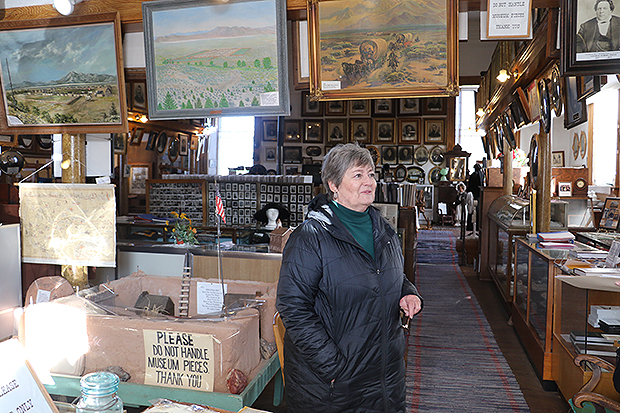
Local historian Sandra Decker Benson explains some of the historical artifacts found within the Parowan Old Rock Church Museum in Parowan, Utah. Photo by Sarah Jane Weaver.
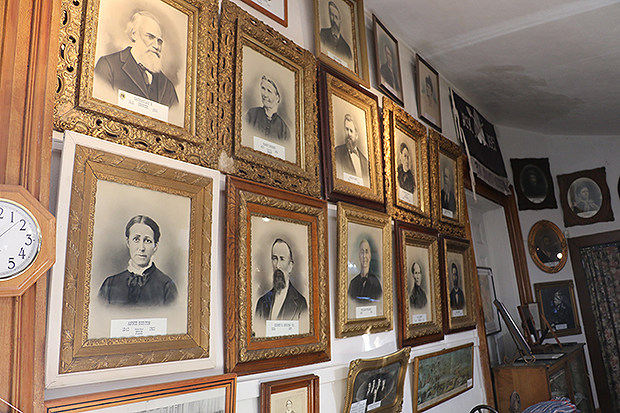
Portraits are among the artifacts found within the Parowan Old Rock Church Museum in Parowan, Utah. Photo by Sarah Jane Weaver.

The director of the Parowan Old Rock Church Museum shows some of the artifacts found within in the museum. Photo by Sarah Jane Weaver.

Local historian Steve Decker stands amidst some of the historical relics found within the Parowan Old Rock Church Museum. Photo by Sarah Jane Weaver.

The museum found within the Old Rock Church on Parowan’s town square contains historical relics from throughout Parowan’s history. Photo by Sarah Jane Weaver.
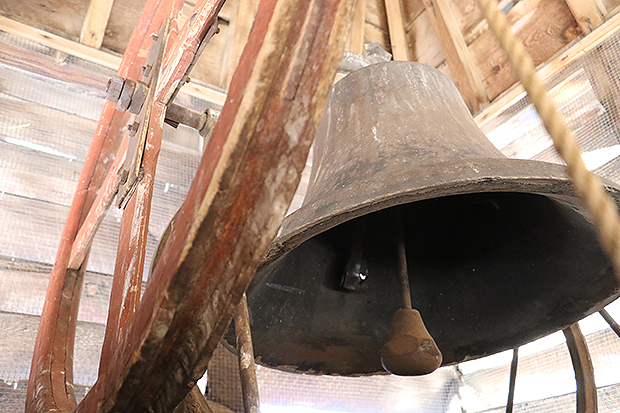
The bell of the Old Rock Church in Parowan, Utah, is rung on the city’s birthday on January 13 and Pioneer Day on July 24. Photo by Sarah Jane Weaver.
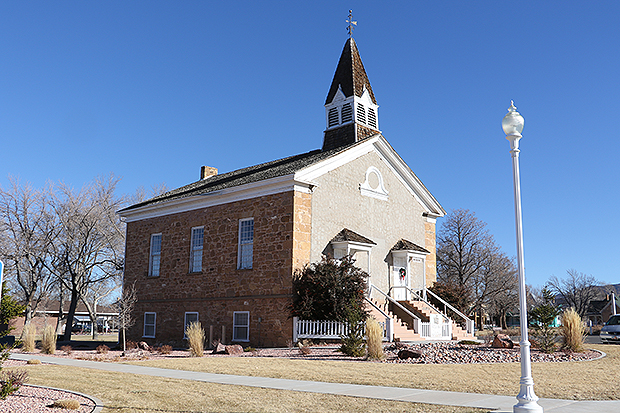
The historic Old Rock Church, built in 1867, now serves as a museum and reception center in Parowan, Utah. Photo by Sarah Jane Weaver.
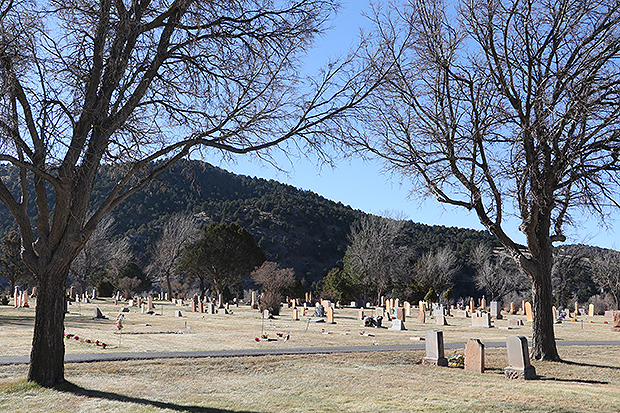
The Parowan City Cemetery. Photo by Sarah Jane Weaver.

Parowan Gap, some 12 miles northwest of Parowan, attracts tourists interested in the ancient petroglyphs inscribed on the smooth boulder surfaces. Photo by Sarah Jane Weaver.
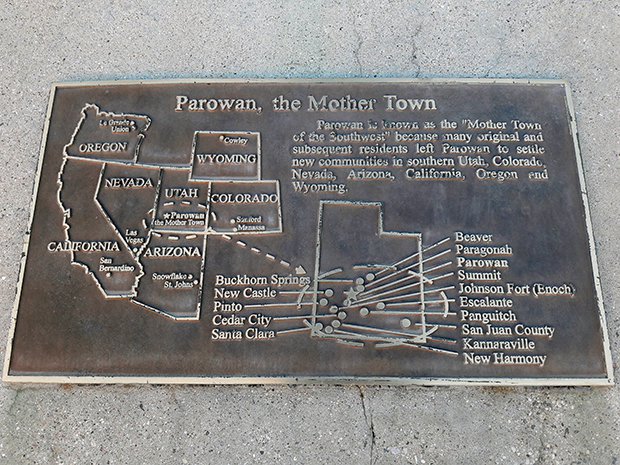
A plaque explaining Parowan’s designation as “the Mother Town” stands in Parowan Heritage Park. Photo by Sarah Jane Weaver.
